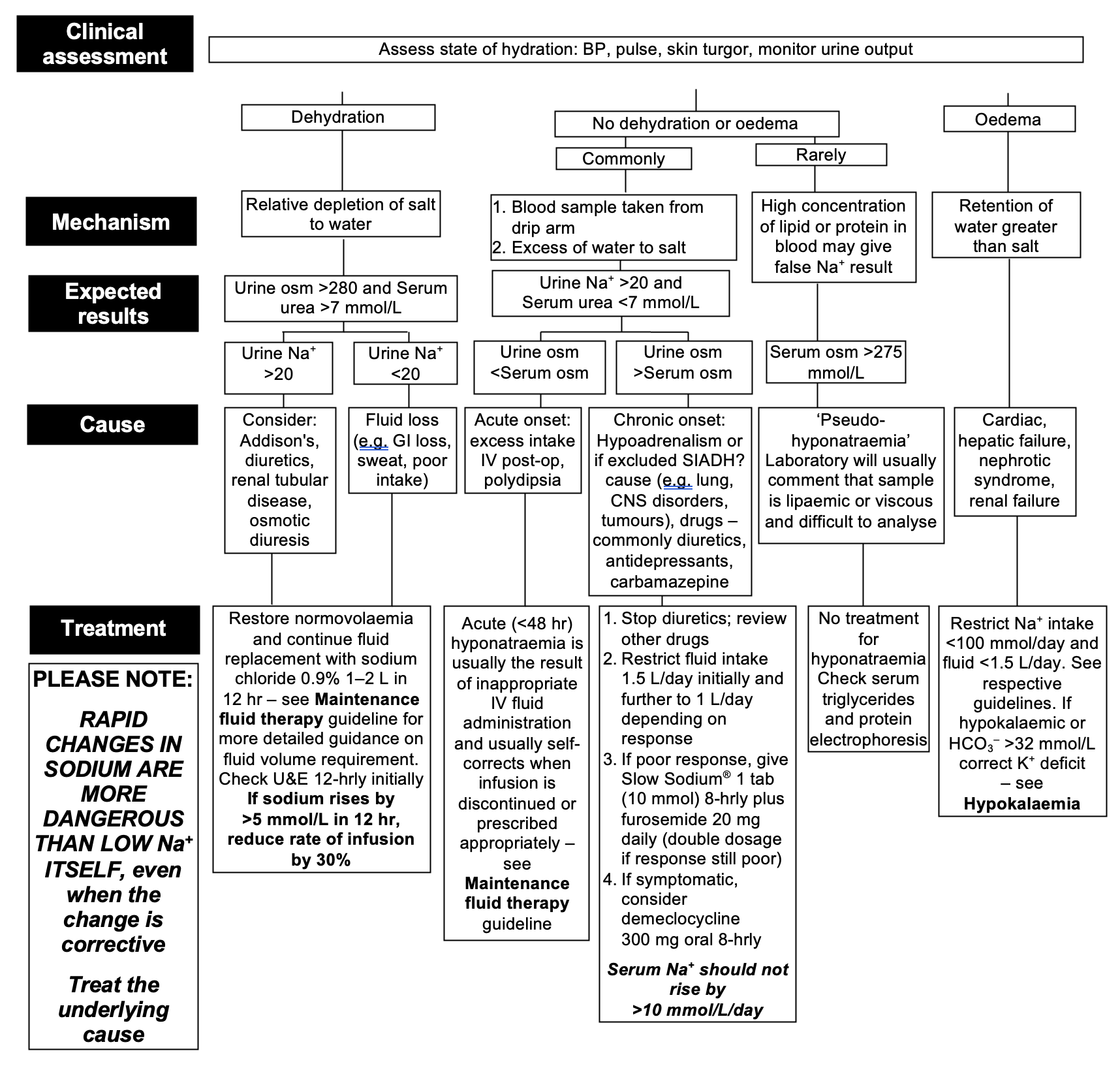DO NOT USE - ALL INFORMATION LIKELY INCORRECT IF NOT ACTIVELY DANGEROUS
Please use current guidelines available on the UHNM intranet for patient treatment
Please use current guidelines available on the UHNM intranet for patient treatment
RECOGNITION AND ASSESSMENT
Symptoms and signs
- Nausea
- Cramps
- Confusion, seizures, varied CNS manifestations
- Unless serum sodium (Na+) falling rapidly, concentrations in range 125-135 mmol/L are usually asymptomatic
- Those of underlying cause
Clinical assessment
- Assess state of hydration: BP, pulse, skin turgor, monitor urine output
Investigations
- Take sample from arm without a drip
- FBC and U&E (eosinophilia, hyperkalaemia, or hypercalcaemia suggest hypoadrenalism)
- Glucose
- Osmolality (urine plus serum), urine Na+, TFT
MANAGEMENT
- Treat the underlying cause. For guidance follow management tool below. Further information available from clinical biochemistry or from renal or endocrine teams
Sodium levels
- Monitor at least daily
- If a patient has a high urine output and/or very low Na <115 mmol /L, monitor electrolytes 4-hrly initially to avoid sudden rises in serum Na+
- Rapid changes in sodium are more dangerous than LOW Na+ ITSELF, even when the change is corrective
- Hypertonic saline is almost never justified, carries a significant risk, should be given only with consultant approval and requires monitoring in a high dependency area
- Failure to correct, or recurrence of hyponatraemia merits referral to the team appropriate to the underlying cause (e.g. renal, endocrine, psychiatric)
- Review drug treatment before discharge

Last reviewed: 2024-02-25